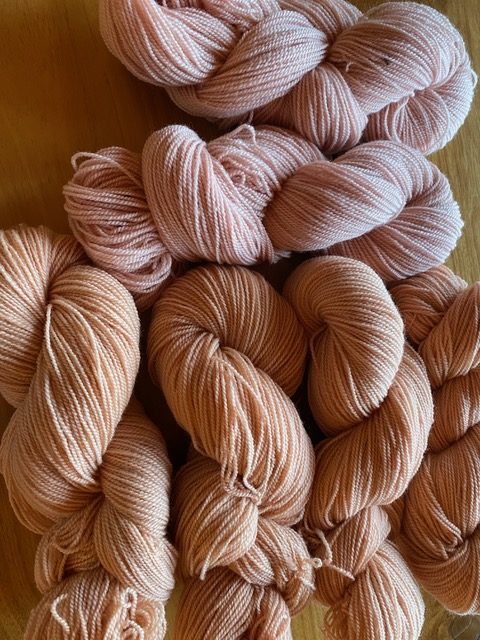At the Fibershed Natural Dye Farmers’ Market on Mothers’ Day, I learned from Helen Krayenhoff, from Kassenhoff Growers, that avocado pits produce beautiful pink colors. Finally a week or so ago I had a chance to try it.
I had been saving and freezing avocado pits for a while. Helen had initially suggested 4 ounces of pits per ounce of yarn to dye, but I found a YouTube by myramadecolor.com, that suggested you could get more color from fewer pits by cutting the pits in quarters and stewing them over the course of many days. On a Wednesday night, I thawed and cut up the dozen pits I had saved, and went to work.
I brought my dye pot to my kitchen for easy access, covered the avocado pits with about a half-gallon of water, and simmered them just under a boil for several hours. Turned it off, like Myra suggested, left it overnight, and did the same thing the next day. That day I left them simmering all night on low-simmer, turned them off in the morning, then simmered again later that day. The following day was Saturday, and that morning I brought the water volume up to about half-fill the 5-gallon pot, brought that to a simmer, transported it up to my dye room (the old milk room of my creamery) filled it up, and brought that to a simmer. The color of the water was quite red. Then I removed the avocado pits, and added soda ash to bring the pH up to 9-10, as Myra suggested, for the best pink color.
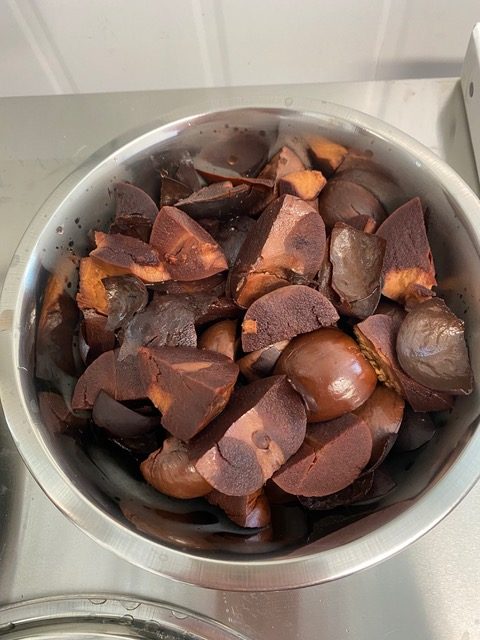
I had six 4-ounce skeins of my white fingering yarn from Flora and Nora all mordanted and ready to go. Myra’s video suggested 3 pits per 4-ounce skein, so since I had cooked a dozen pits, I put 4 skeins in the pot and kept it on gentle heat for about a half hour. I could see right away the yarn was picking up nice color.
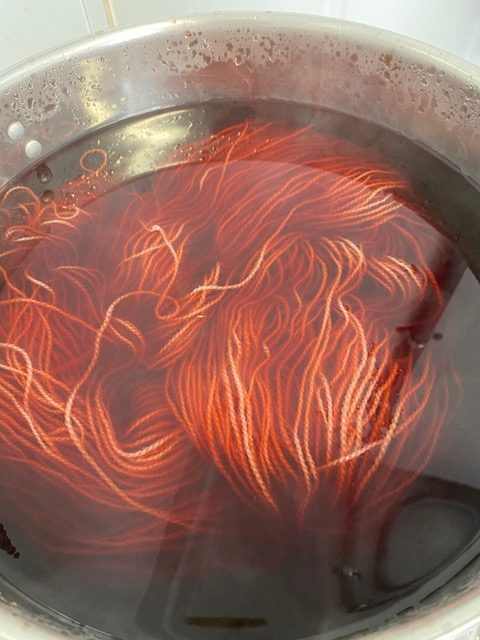
I pulled the yarn out and it was a gorgeous salmon-pink. But I had noted that Myra suggested that a high-pH dye bath would produce a more pure baby-pink. I checked the pH of the dye bath and it had dropped to 5. The mordanted yarn must have had residual acidity that dropped the pH.
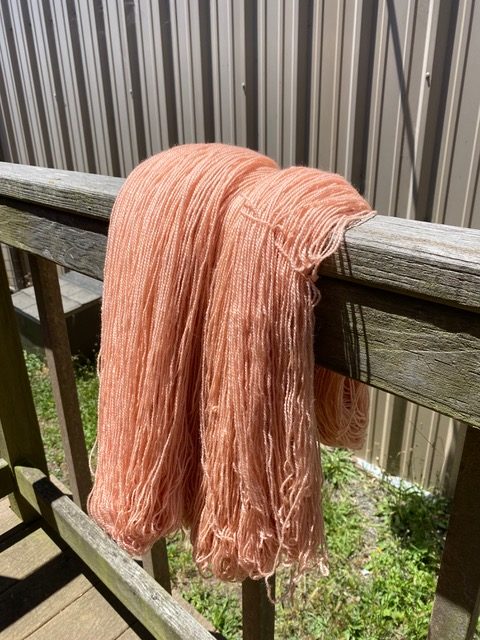
I added more soda ash, bringing the pH back to 10 or so, and added two more skeins of my Flora & Nora, checking the pH after the skeins were in. It was holding at 9-10. Left it an hour, and voila! Beautiful soft baby-pink!
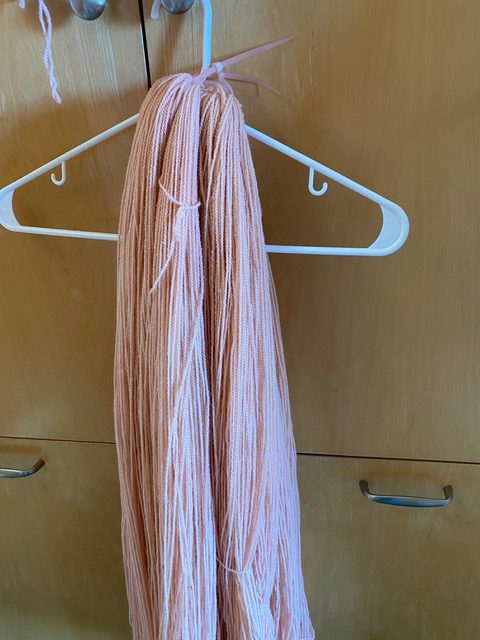
Looking at the two colors side-by-side, I decided that I actually would prefer to wear the salmon-color. I had now done 6 skeins with a dozen pits, but the bath didn’t seem to be spent at all. So I mordanted 5 skeins of my DK-weight white yarn, from Pearl & Chuck (enough for an Isabel Kraemer cardigan I’ve had my eye on) and threw that in. It came out the same beautiful rich salmon as my first yarn. I was now down to a ratio of just over 1 pit per 4-ounce skein! I was out of time, so I quit, but I’ve saved the bath and may try it again before I throw it out.
Moral of the story: you don’t need to eat as much guacamole as I thought to get yourself a nice pink sweater! Nevertheless, I’m working on my next batch of pits and hope to have some of this gorgeous yarn to sell soon.
